Chinese 57mm Type-36 Recoilless Rifle
Above: A Korean War era Chinese 57mm Type-36 Recoilless Rifle that has been demilitarized by cutting the shell chamber in the Lovett Collection
M18 Family of 57mm Recoilless Rifles
By: Drew Thompson
from 2011-18 Director for China, Taiwan and Mongolia in the Office of the Secretary of Defense
M18 Specifications
Weight: 45 lbs
Length: 5 ft
Operation: Shoulder fired; attached monopod/bipod ; or M1917A1 MG tripod.
Sight: M26
Projectiles: High Explosive (HE); High explosive anti-tank (HEAT); Smoke (WP), Anti-personnel (AP)
Muzzle Velocity: 1,200 feet per second
Range: 4300 yards
Rate-of-fire: 8 rounds per minute
History
The first recoilless rifles using a counterblast through the breech were employed by German troops on the Greek island of Crete in 1941. At the start of World War 2, British arms designers were also designing a recoilless gun with a perforated casing to channel explosive propellant gasses to the sides of the shell and out four large nozzles in the breech.
Spurred by these developments, in early 1943 U.S. Army Ordinance tasked the Frankford Arsenal to explore, “applying the recoilless principle to the development of man-portable, infantry-type weapon for defeat of armor." The first test gun was fired on 27 July 1943, with the bureau deciding on the final design of a 57mm recoilless rifle firing a 2.75 pound projectile in October 1943. Labelled the T15, its final demonstration firing took place at Aberdeen Proving Grounds on 27 September 1944. Unable to identify a suitable manufacturer in the United States, the T15, now designated M18, were manufactured at the Dominion Engineering Works in Canada. In March 1945, approximately 100 of the 57mm M18 recoilless rifles were shipped to Europe just before Germany surrendered in May. M18s along with the larger 75mm M20 recoilless rifles were shipped to Okinawa at the same time, where they were used by U.S. Marines primarily to destroy Japanese bunkers, caves, pillboxes and machinegun nests.
There were several shells developed for the M18. A standard HE (high explosive); HEAT (high explosive, anti-tank) which used a hollow, shaped charge for penetrating armor; and WP smoke round (WP for white phosphorus). An AP (Anti-personnel) round was also designed, with a cannister shell comprised of a thin sheet of metal containing 133 to 140 steel slugs that effectively turned the M18 into a giant shotgun.
M18 ammunition cases have 400 perforations, which allow the propellant gasses to escape to the sides of the shell and then out the back of the breech through venturi vents, which counteracted the force of the round leaving the barrel, making the rifle recoilless. An interesting innovation in the M18 are the shells which feature pre-engraved driving bands, mating with the rifled grooves in the barrel, reducing friction and the pressure needed to force a round projectile into the grooves of a traditional rifle.
The M18 can be fired from a tripod (M1917A1 machine gun mount), or the shoulder, or the prone position. With a two-man crew (one to fire, one to reload), the M18 could sustain a rate of 8 rounds per minute. While the typical bazooka used in World War 2 had a more effective anti-armor round which could penetrate thicker armor, the M18 with its spinning projectile was more accurate and could be fired twice as fast, making it a preferred weapon for eliminating enemy fixed positions such as pillboxes and machine gun nests.
Type 36 – Republic of China - 36式57公釐無後座力砲
In 1945, the United States provided the M18 along with its design drawings to the Republic of China (ROC). The ROC reverse engineered it in 1947, designating it the Type 36. Interestingly, the ROC uses a unique official calendar based on the fall of the Qing Dynasty and founding of the ROC in 1912. 1947 was the 36th year of the Republic, hence the Type 36 designation.
The ROC's Type 36 57mm recoilless rifle was not successful, however. The ROC did not have the right steel alloys due to industrial shortcomings resulting from World War 2 and the civil war against the communists. Early versions manufactured at the Number 50 Arsenal in Chongqing were not durable and often failed in the breech and trigger mechanism. A total of 95 Type 36s were produced.
After the Kuomintang Army (KMT) retreated to Taiwan in 1948-49, they took manufacturing equipment and designs with them and continued to work on building a recoilless rifle. Rather than continue to build the Type 36 however, in 1950 they began designing a 75mm recoilless rifle. The Type 43 was manufactured in the Number 61 Arsenal, using steel parts from decommissioned M10 tank destroyers that had been provided to Taiwan by the U.S. as war surplus. The M10 tanks had been demilitarized, so Taiwan repurposed them, using some of the parts for the Type 43 recoilless rifles. 1232 Type 43 guns were built between 1951 and 1963.
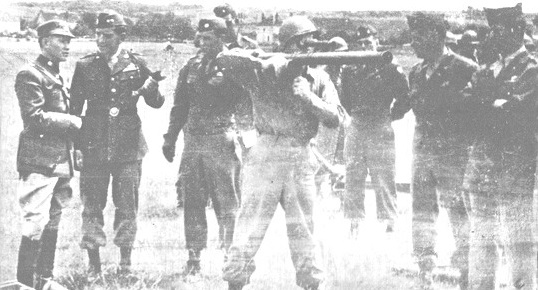 |
Above: Republic of China General Sun Liren observing US 13th Airborne Division soldier operating a M18 recoilless gun, 1945
Type 52 – People’s Republic of China - 52式57毫米无后座力炮
During the civil war, the Communist Party’s Red Army was able to capture the Type 36 from KMT units, as well whatever was left behind at the Number 50 Arsenal in Chongqing. After it fell to the Communists, the Number 50 Arsenal was renamed the Wanjiang Arsenal, where it continued to manufacture the Type 36. Without assistance from the Soviet Union which did not produce its own recoilless rifles, the Wanjiang arsenal subsequently began to reverse engineer captured M18 and M20 75mm recoilless rifles. Soviet support did include the provision of specialty steel alloys, which enabled the Wanjiang arsenal to begin mass production of the 57mm Type 52 and the 75mm Type 56 recoilless rifles beginning in 1952.
The Type 52 is not identical to the M18, however. The 57mm ammunition made in the United States can be fired in the Type 36 and Type 52, but M18s cannot use Chinese shells. The effective range of the Type 52 was also shorter than the M18.
Captured M18 and Type 36 guns were used by the People’s Liberation Army "volunteers" in the Korean war and invasion of Tibet in 1950. In Tibet, M18 rounds were fired at snipers in the Potala Palace because Zhou Enlai ordered that the Potala Palace should not be damaged, ruling out the use of heavier artillery.
Type 52 guns were used by the PLA in the 1962 Sino-India border conflict and the Sino-Soviet border conflict.
After 1963, a large number of Type 52 recoilless guns were handed over to the North Vietnamese guerrillas, who used them to attack US and South Vietnamese forces. Chinese forces also used them during the Sino-Vietnam border war in 1979.
After the acquisition of newer recoilless rifles, the PLA continued to use the Type 52 for training.
Korean War
M18 recoilless rifles were used by the U.S., Chinese and North Korean forces during the conflict.
In 1950, each U.S. Army infantry company was equipped with three 57mm recoilless guns, in addition to bazookas and mortars. U.S troops quickly learned that the HEAT round was inadequate to penetrate the frontal armor of Soviet T34/85 medium tanks. U.S. soldiers utilized it much as they did in Okinawa, against fortifications, bunkers, buildings and machinegun nests.
Chinese forces quickly learned to use the gun as an ambush weapon, firing at U.S. tanks from hillsides and perpendicular to roads so HEAT rounds had a greater chance of penetrating a tank’s thinner side-armor. According to Chinese sources, Chinese soldiers used 57mm recoilless guns to destroy more than 60 U.S. tanks and armored vehicles.
North Korean units also fielded captured 57mm recoilless rifles during the war, though declassified U.S. intelligence assessments in the 1960s and 1980s do not reference the M18 or Type 52 in inventory of the Korean People’s Army. Chinese sources claim that the 57mm recoilless rifle was used by North Korea until the 1970s.
 |
Above: A U.S. 57-mm recoilless rifle team opens fire at a Chinese position three miles south of the 38th Parallel. 31 March 1951
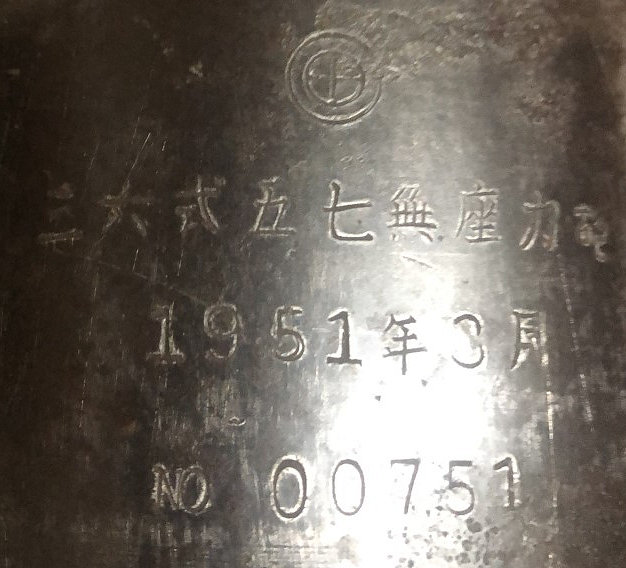 |
Above: Chinese 57mm Type-36 Recoilless Rifle markings with a 1951 date in the Lovett Collection. Below is the translation by Drew Thompson:
Above: The circle and plus sign marking at the top is attributed to Number 50 Factory in Chongqing after its capture by the Communists Chinese. For more inforamtion on this marking see this link:
Above: The Chinese Type-36 Recoilless Rifle set into a US machine gun mount. Note that the trigger/handle is broken
Below: Mandurian language manual for the 57mm Type-36 Recoilless Rifle pages 1-18 and the second part of the book is for the Type-51 Rocket Launcher
三六式五七无座力砲
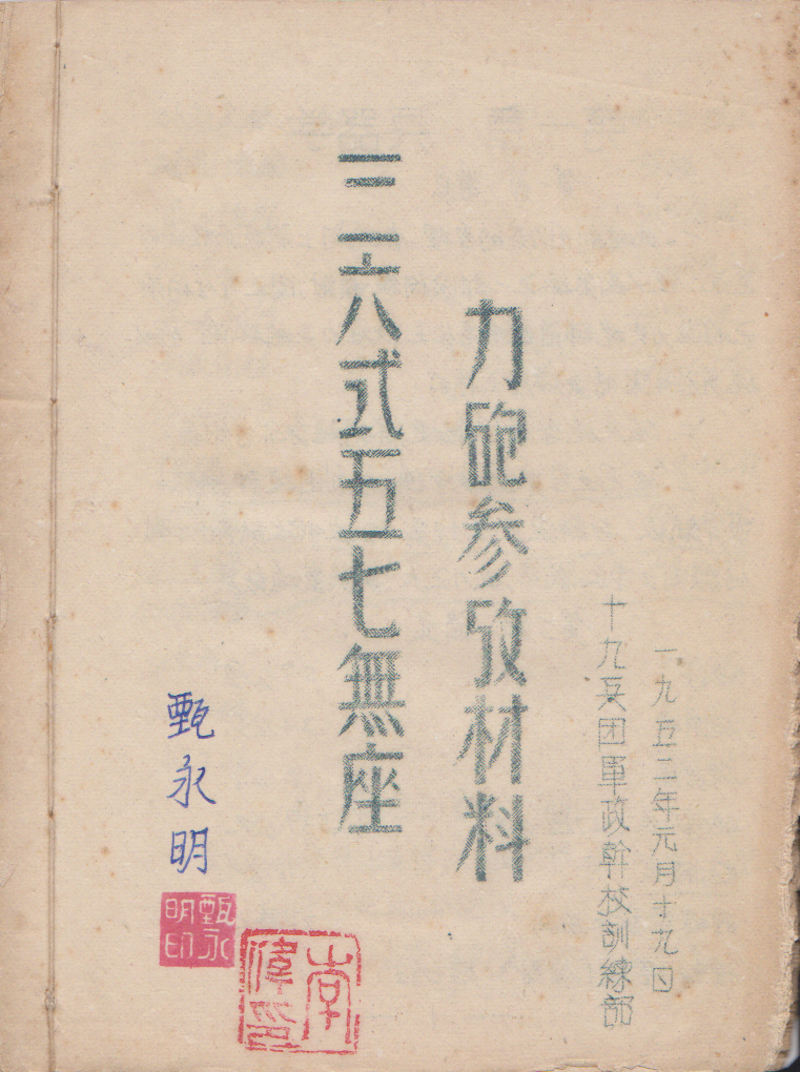 |
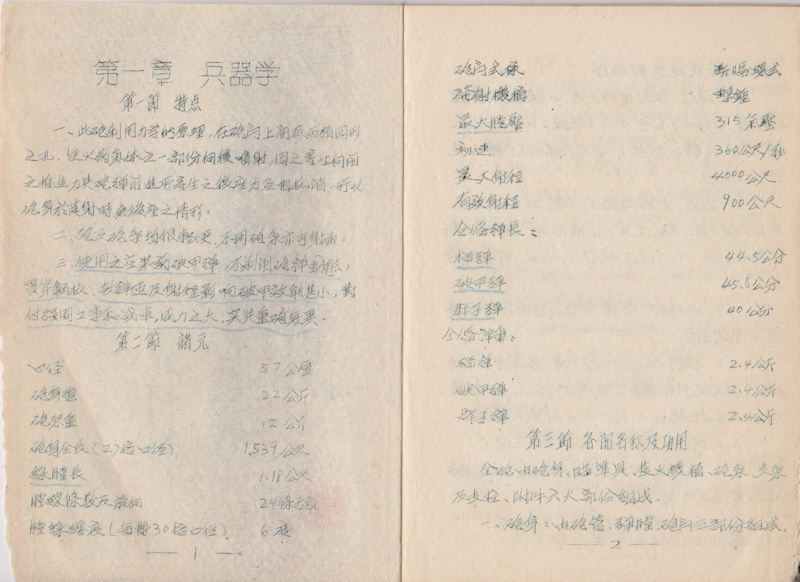 |
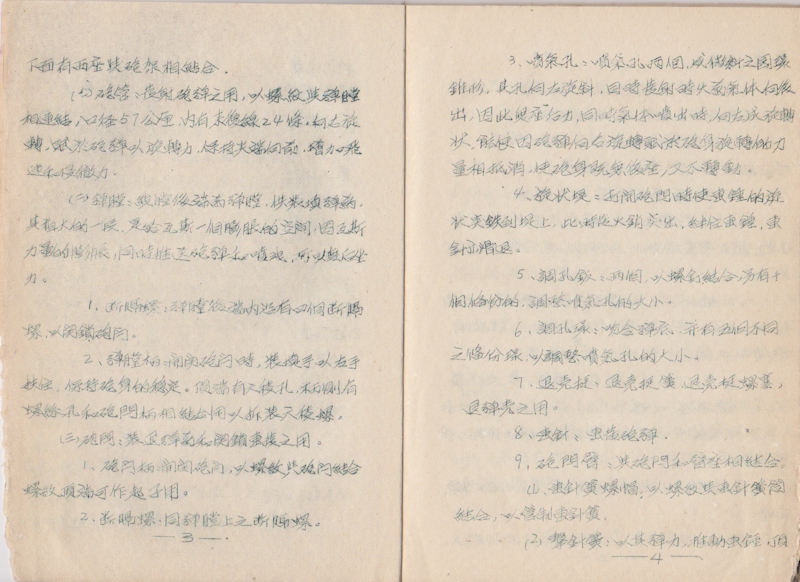 |
 |
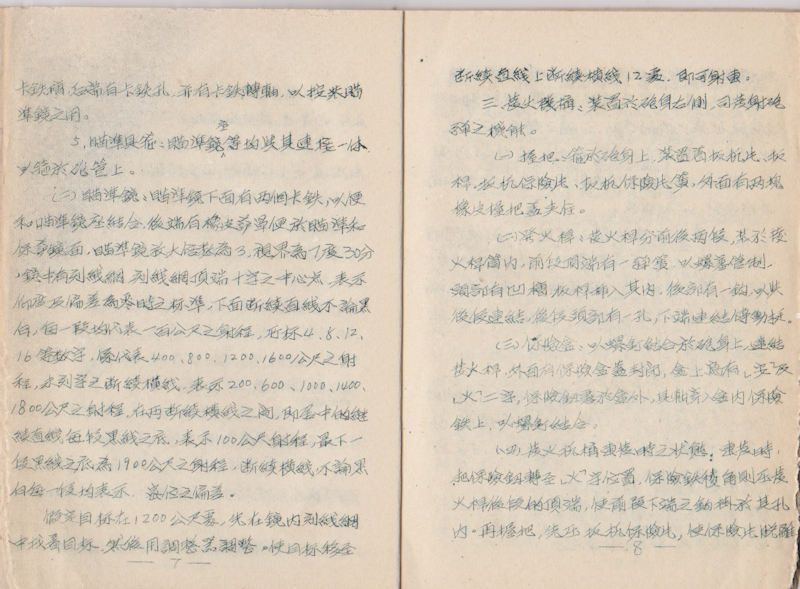 |
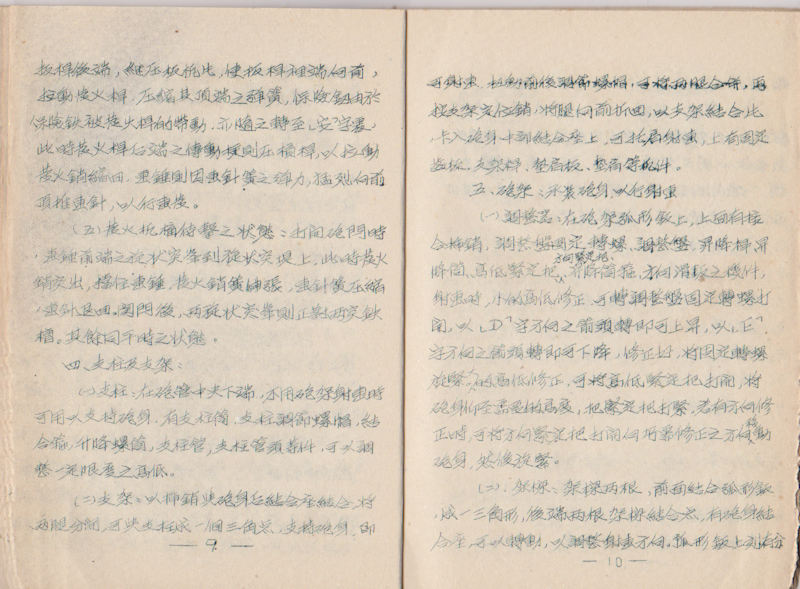 |
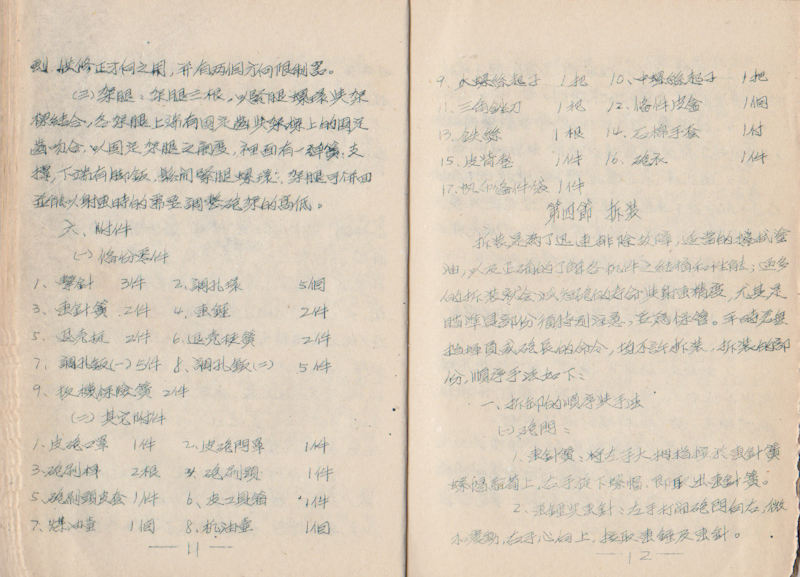 |
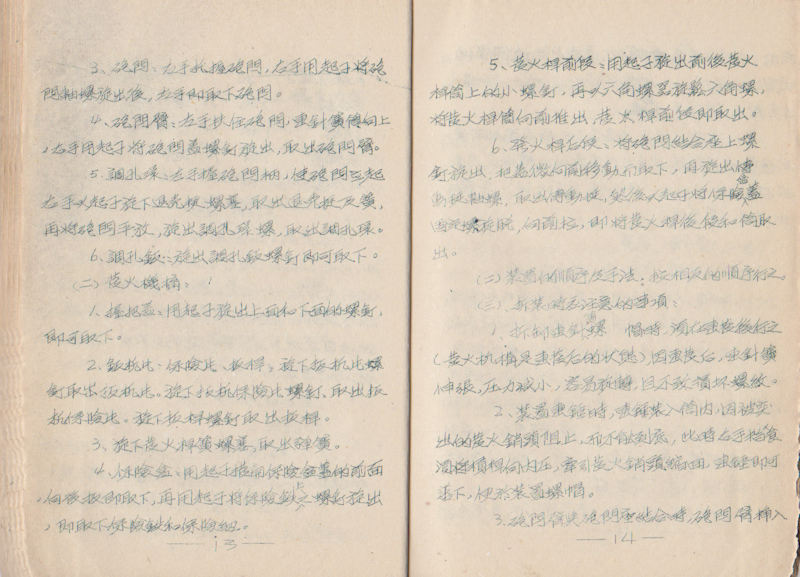 |
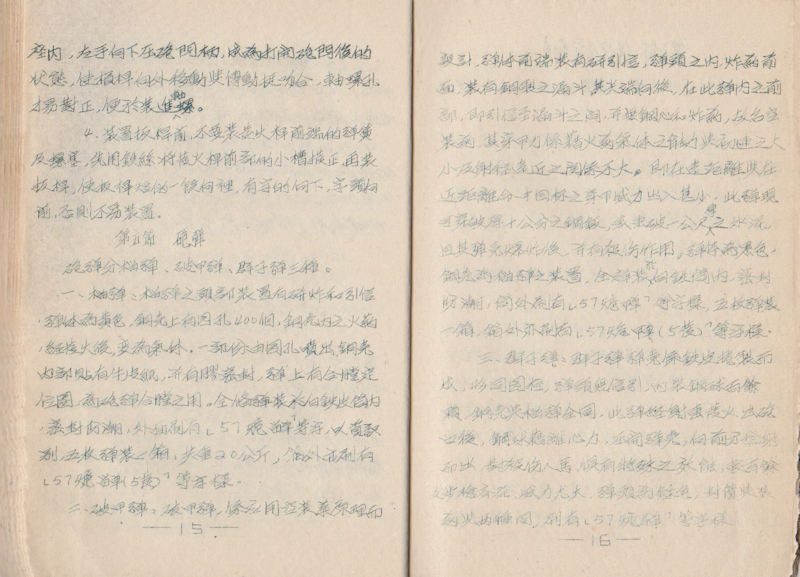 |
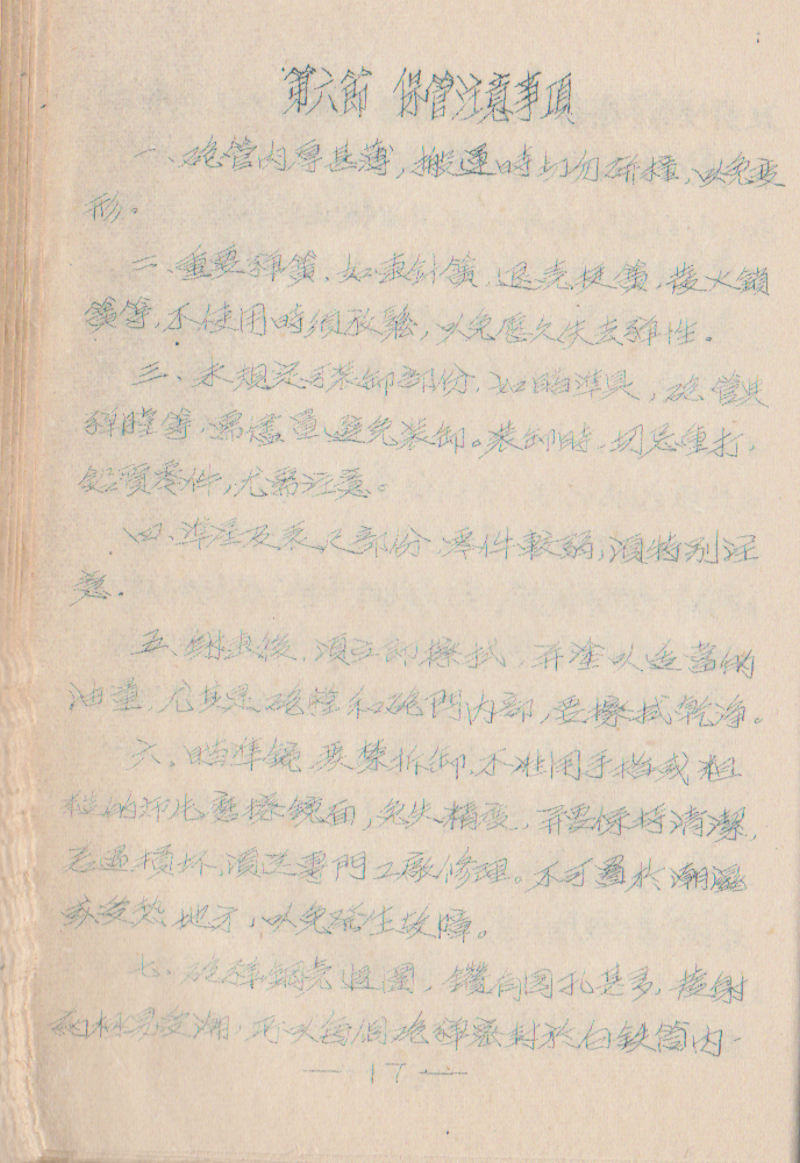 |
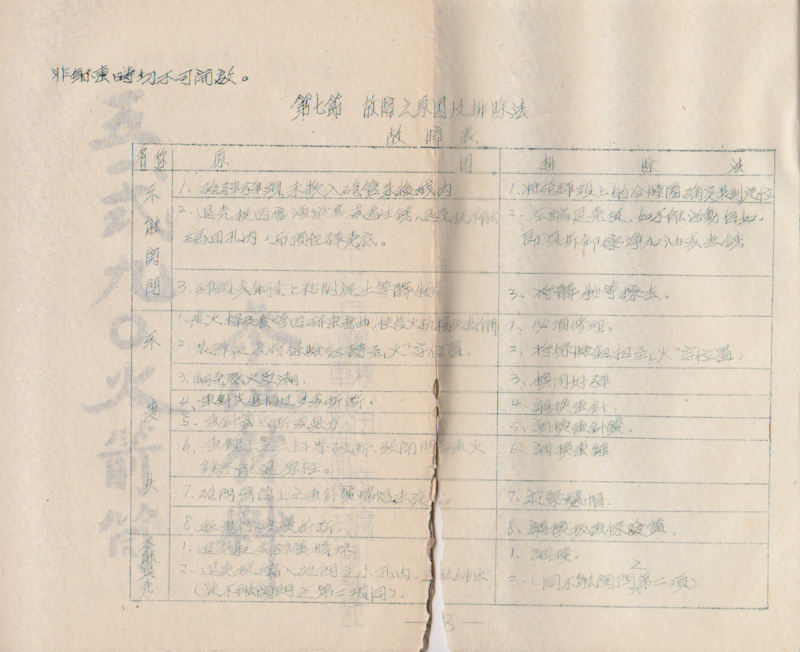 |
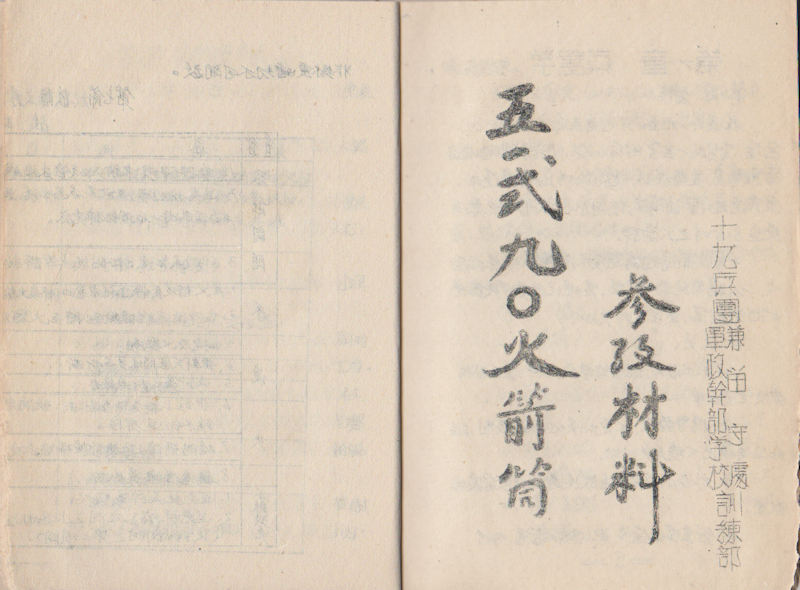 |
 |
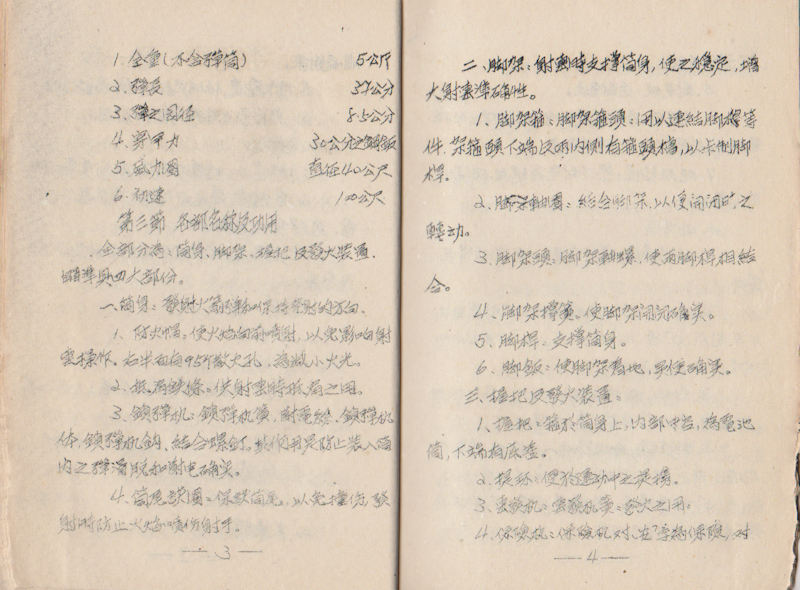 |
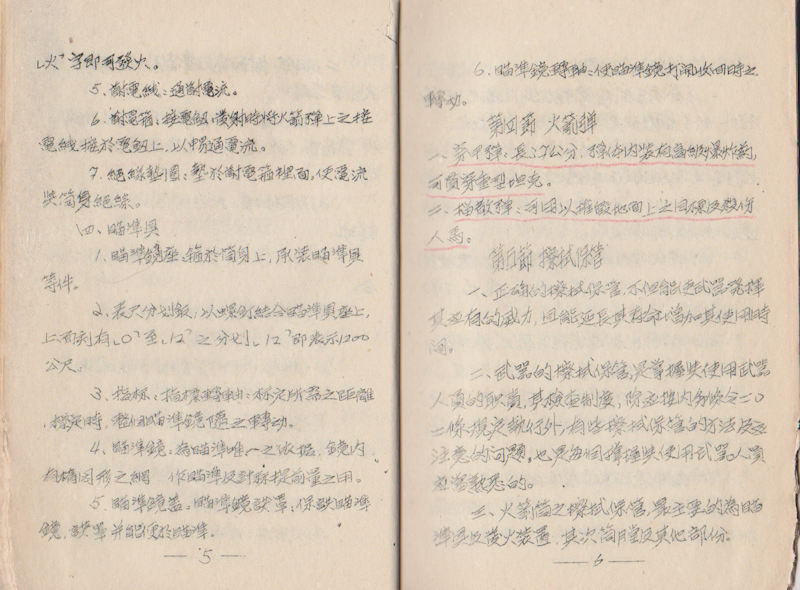 |
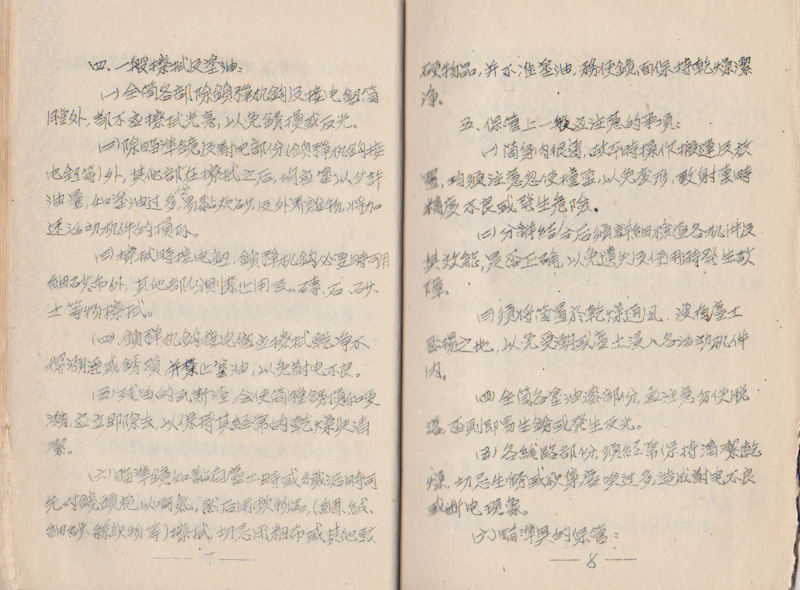 |
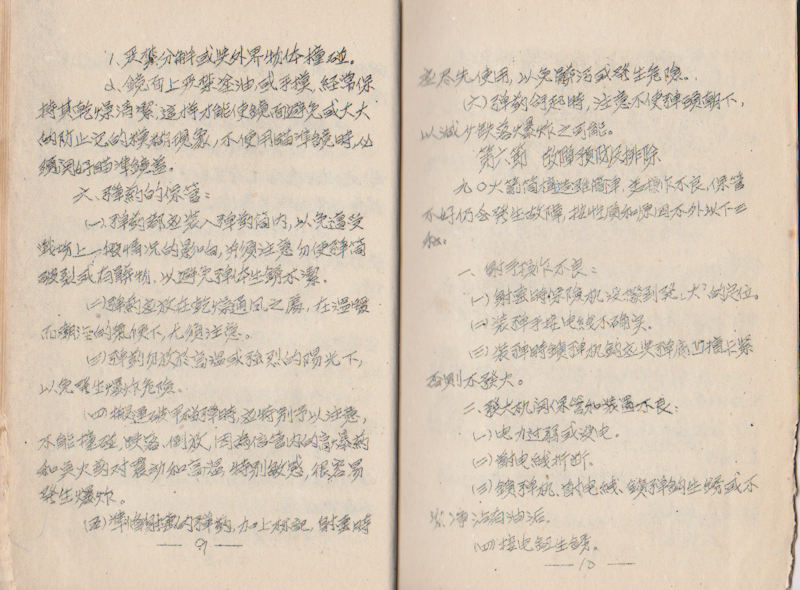 |
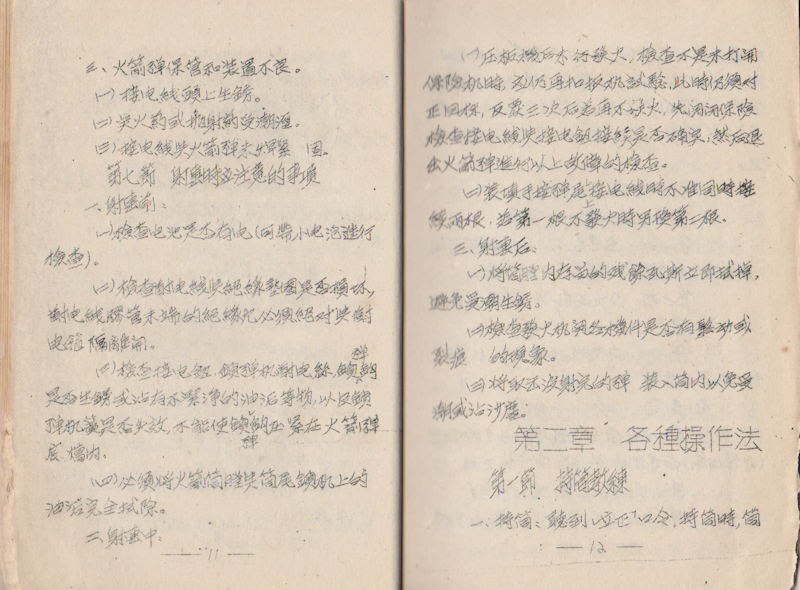 |
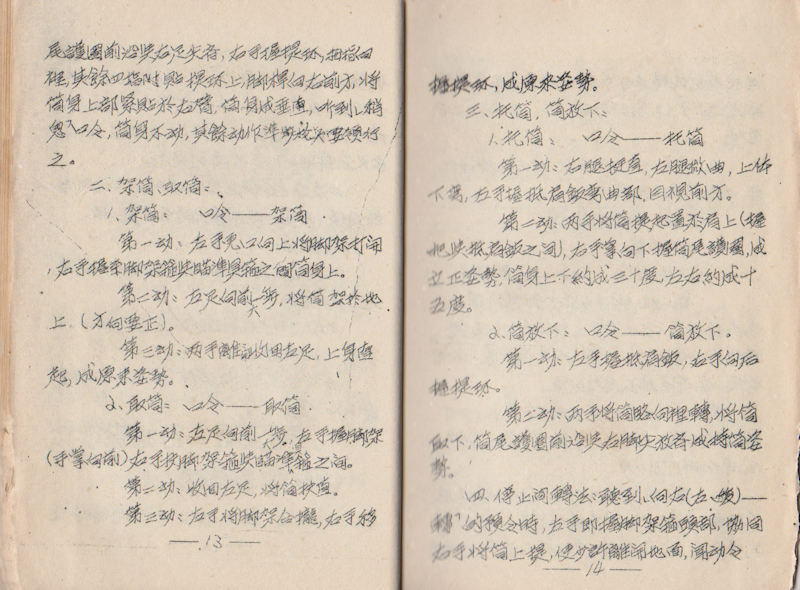 |
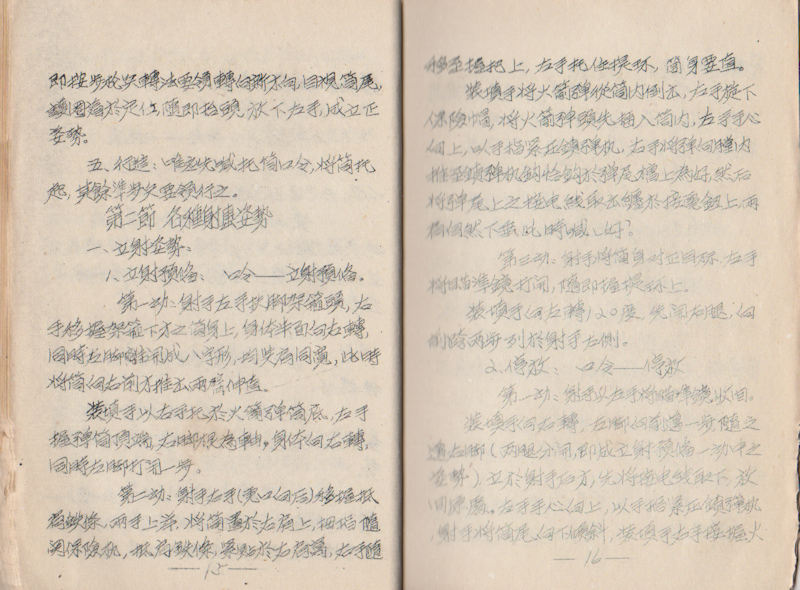 |
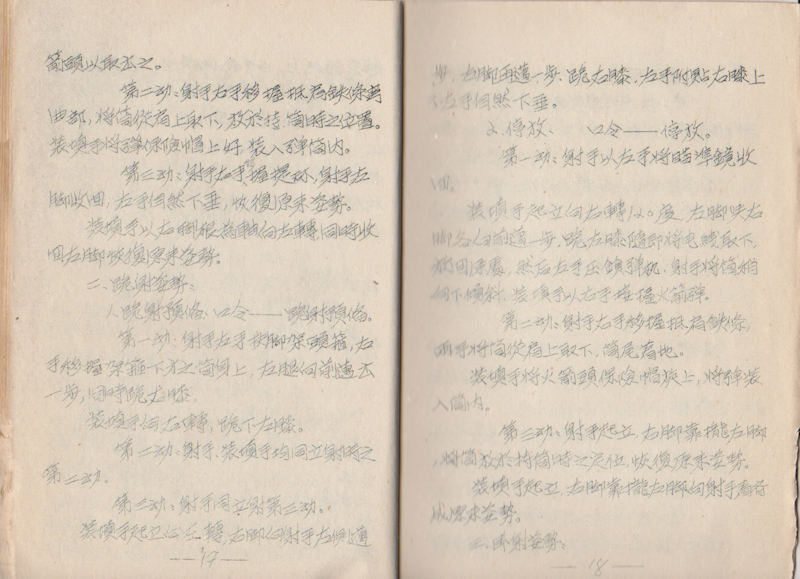 |
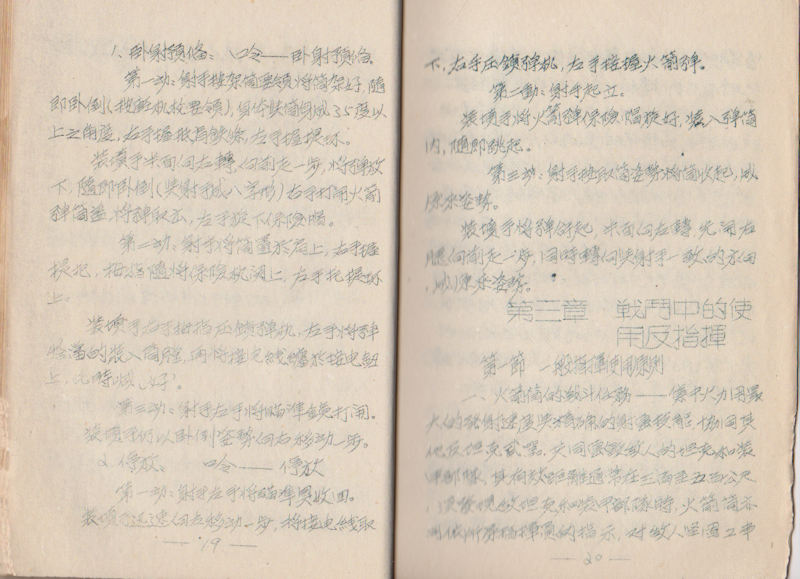 |
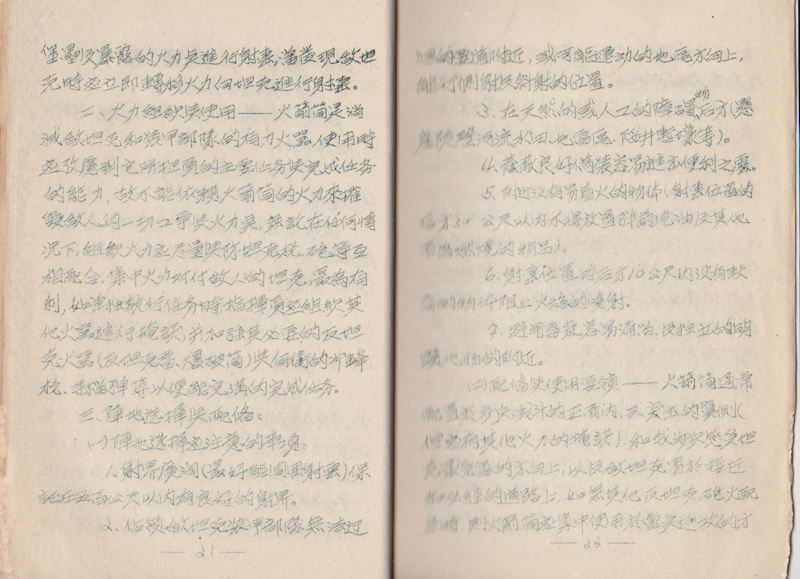 |
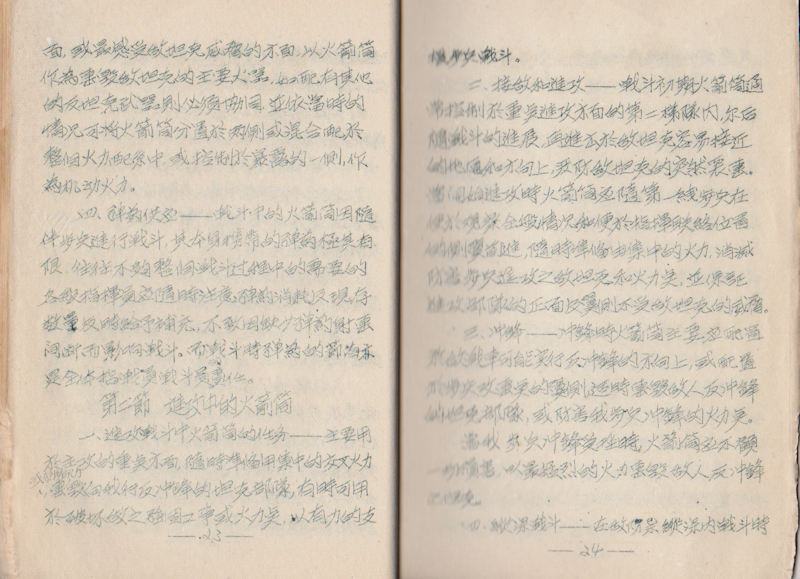 |
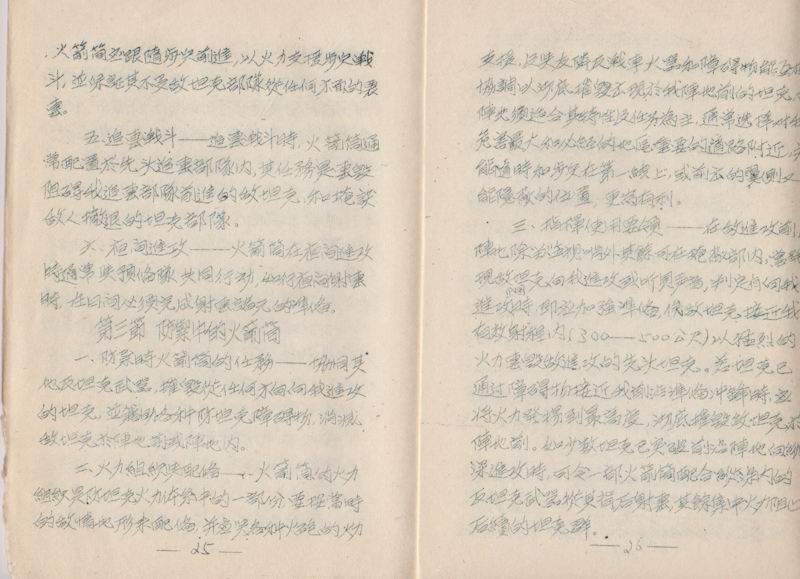 |
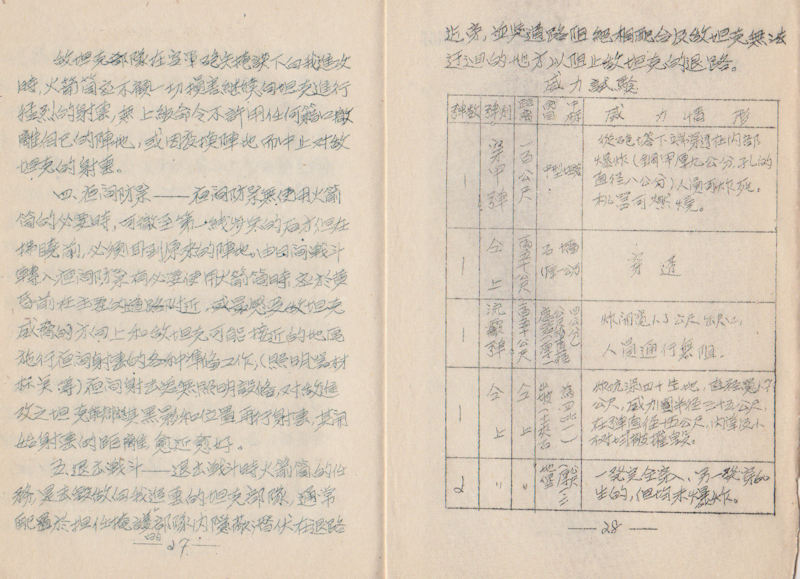 |
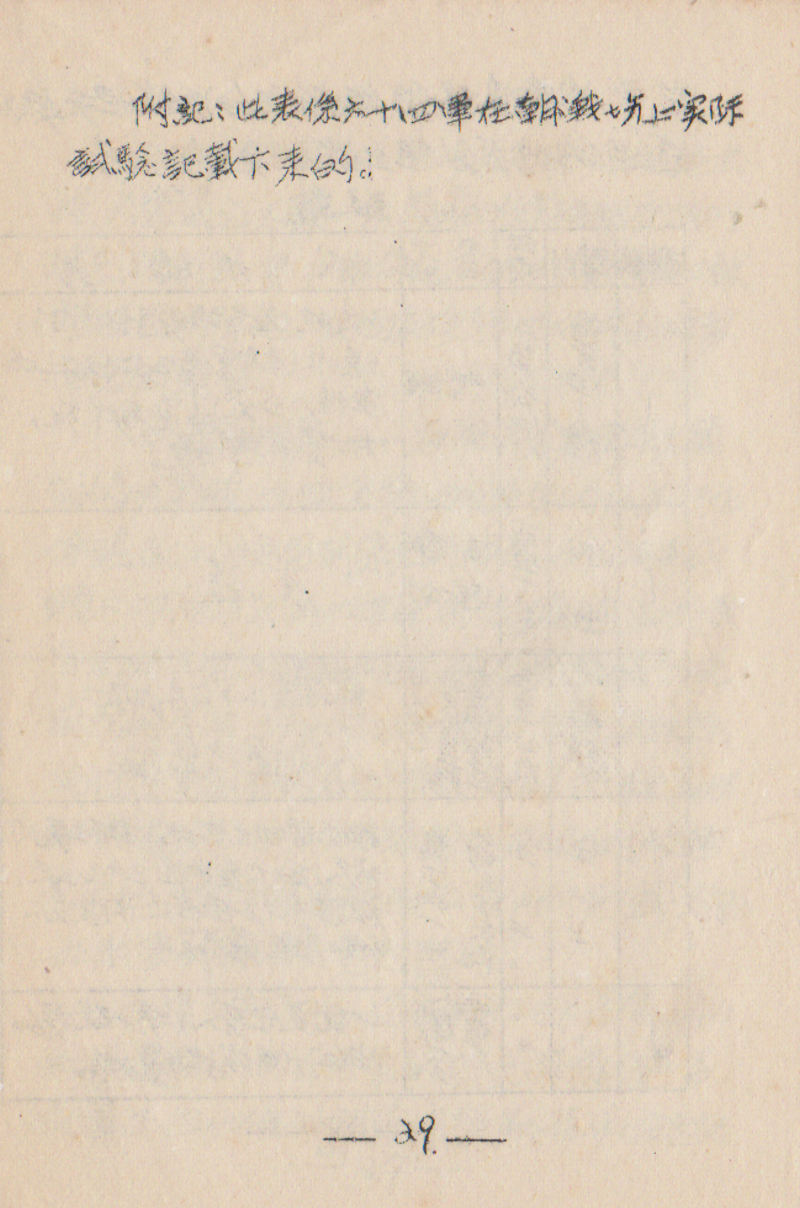 |